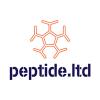Seriously, lostfalco, it appears that your cognitive abstraction level has ascended several notches, inasmuch as I understand your point about having the best software in addition to the best hardware. But what's more atypical with regards to your posts above is their tenuous relevance to the topic of your own thread here. Granted, while I disagree with whoever labelled them as pointless and timewasting, it seems to me that perceiving such distant connections might equally be associated with enhanced mental function, as schizophrenia.
To cut to the chase, are you OK? I second raimis100 in inquiring as to any connection with BF-7, or some other recent change.
haha It's totally cool if someone (or 'someones') wants to vote all of those posts as time wasting...they're entitled to their opinion.
My opinion is that those posts are actually MORE important than any of my posts on supplements. No worries if someone disagrees. =)
To reveratrol_guy: Hey man...so your statement about my cognitive abstraction level assumes this: something about LF has changed.
Then, you propose a few hypotheses to explain the 'change': 1. enhanced mental function, 2. schizophrenia, 3. BF-7, 4. some other recent change, etc.
The important thing here is to examine the first claim because if the claim that 'something has changed' is NOT true then there is no need to explain it. =)
Have I posted about similar topics in the past? Have the posts been of a similar type? (this isn't perfect, but it's good enough for our purposes)
Aug 2013: mention Kanhemann/Taversky, Robert Trivers, the cognitive psychology literature http://www.longecity...-14#entry602727
Aug 2013 I discuss individually necessary and jointly sufficient conditions. http://forum.bulletp...ge-3#entry40296
July 2013 I discuss optimizing my spacetime, Covey's countdown, change blindness, justification for enhancing healthy people, etc. http://forum.bulletp...nza/#entry35629 (ALL of these can be found on the Longecity thread as well...they're just all centralized at this link)
Oct 2013 I mention Yudkowsky, lesswrong.com, necessary and sufficient conditions, Baye's Theorem, biases/heuristics literature, etc. http://www.longecity...46#entry619616
Alright, that should be enough for now. That's everything the voices in my head told me to write about. =)
Edited by lostfalco, 30 October 2015 - 07:41 PM.





















































